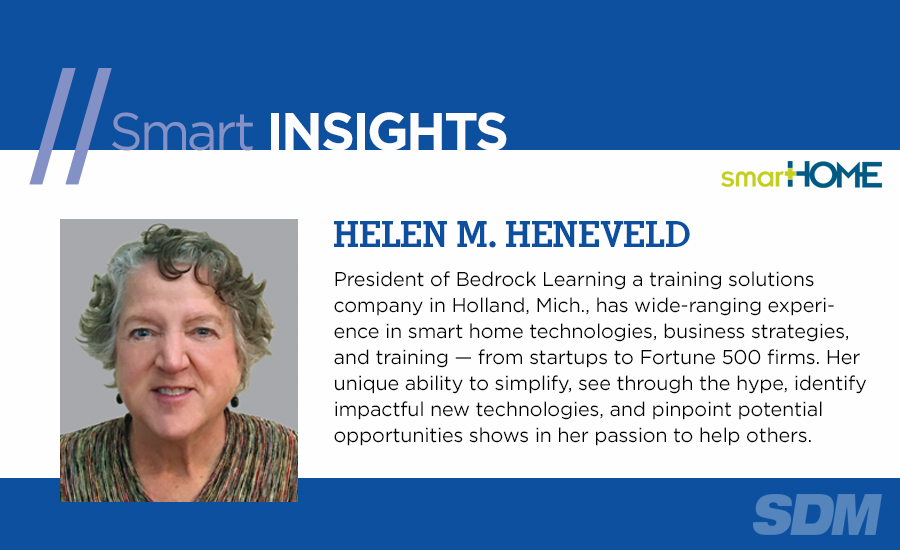Smart home technology has certainly come of age. I saw it everywhere at CES, the Consumer Electronics Show, in Las Vegas last month. The Z-Wave pavilion was the largest one yet, with 30 partners sharing their solutions to integrate with home control systems. Z-Wave is one of the leading technologies for connectivity with an ecosystem of more than 2,600 wireless control products.
The show floor was scattered with a wide variety of connected devices, using Z-Wave and other technologies, from the usual to the bizarre: TVs, lighting, furniture, temperature control, air quality, windows, doors, security devices, speakers, appliances, locks, and mobile devices; to vehicles, clothing, toilets, jewelry, toys, healthcare monitoring devices, air ducts, mail boxes, and vacuum cleaners. Add to all of these, services offered such as notifications, alarms, and remote control — it’s a tangled spider web of connectivity that will confuse and frustrate the most patient and organized consumer. At the center of it is the home network, the “glue” that reaches out to the internet and connects everything together.
Things are happening at a fast pace, and it is a challenge to keep up with so many new products. Remember, there will be 50 billion connected devices by 2023, and they need to be connected, secured and managed.
That is where your skills and knowledge come in to play. Know your manufacturers and suppliers. It is their job to stay abreast of the latest technologies, incorporate them into their offerings, or partner with others to provide connected devices. They are your resource for the products and services your customers desire — or will discover they want — once they are educated and understand the benefits. In addition, these sources should be helping you educate your clients about connected devices and the smart home, plus the many paybacks associated with them. Follow the industry and turn to your suppliers for market information. Make sure they are at the forefront. It can be a challenge for large companies to adjust and change direction quickly, but with the right attitude toward change and adaptation, along with resources, they can make it happen.
Identify your strategy for operating in the connected devices and smart home markets: What will your product offerings be, what services will you offer and add to your RMR, how will you educate your customers, how will you monitor progress and measure success. Everyone on your team, including technicians, sales personnel, administrative staff, and management should understand the connected world and the basics of networking; today it’s the lifeblood of the home and all businesses.
Here’s a selfish plug for two of Bedrock Learning’s (my training company) recently updated online courses: The Connected Home and Networking 101 for Everyone. Both courses are vendor-neutral, easy-to-understand, and lay a great foundation for what is happening in the world.
Look at your roadmap for 2019 and beyond. See if there is a plan to leverage the Internet of Things, and be the trusted resource. The security industry has the edge right now to deliver the IoT, but not for long as others eagerly enter the market, including integrators, electricians, other subcontractors, and utility providers. It is time to take advantage of the growth in the smart home/office industry.
I’ve said it before and will say it again, “Connectivity, the network, and smart home are big opportunities and the security industry is well-positioned to serve this burgeoning market.” Immerse yourself in the industry, educate your team, make a strategic plan, and go for it.


